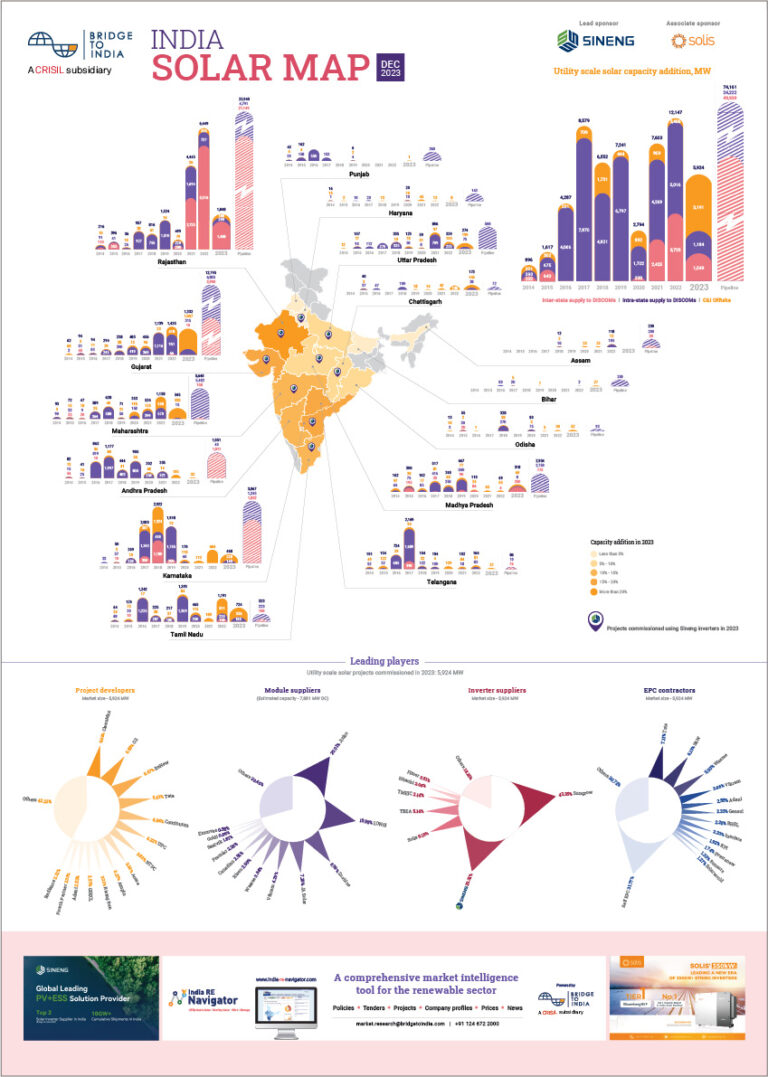Mr. Akhilesh Magal heads the Project Development team as Senior Consultant at BRIDGE TO INDIA.
The Central Electricity Regulatory Commission (CERC) has proposed to extend the validity of RECs beyond the current period of one year. The petition is listed for hearing on 15th January 2013 (click here for petition). Interested parties are invited to send in comments by 5th January 2013. I do not believe that this this is right move by the CERC for three reasons:
- The CERC is attempting to correct supply. The problem however, is on the demand side
- This move will only compound the problem, leading to even more over supply
- RPOs must be enforced. However, merely coercing obligated entities will not work. The CERC must create a framework of incentives to help obligated entities meet their RPOs.
The motivation for extending the validity is due to a large number of unsold non-solar RECs. Nearly 1.28 million non-solar RECs remain unsold, out the 1.5 million non-solar RECs available for sale on the exchange. This affects project developers adversely. If the non-solar RECs lapse at the end of this financial year, it will impact the project adversely.
There are three interesting observations I would like to make and propose a solution to each.
- The CERC is attempting to solve the wrong problem. The issue is not with supply, it is with demand. The real problem is that obligated entities (DISCOMS, captive power producers and open access consumers) are not being penalized for non-compliance. Most DISCOMs are adopting a “wait-and-watch” policy to see if penalties will be enforced. The CERC can extend the validity for as long as they want, but if nobody wants to buy RECs- they will remain unsold. What the CERC really needs to do is publically list the defaulters and penalize them before the end of the year. That will set the cat among the pigeons.
- Extending the validity, will exacerbate the oversupply. This will keep prices at the floor price of INR 1,500 and deter any new entrants into the non-solar REC market. This sends a wrong signal to potential developers who want to adopt the REC mechanism as an off-take. Unless, the demand is fixed, the REC mechanism remains in jeopardy. The Indian solar market needs the REC mechanism to work, as it is a bridge between a subsidized market and a free market.
- Brow-beating obligated entities to fulfill RPOs will not work. DISCOMs are bleeding, open-access consumers have opted for open-access to reduce levelized cost of energy and captive consumers run their own plants (often at high prices) because the DISCOMs cannot guarantee supply. Under these conditions, it would be foolish to presume that the obligated entities are likely (or keen) to comply with RPOs. A better method to ensure compliance would be to offer tax-benefits on the cost of compliance (Accelerated Depreciation (AD) and other specific exemptions under different sections of the income tax code). But of course, tax benefits can be extended only to profitable companies, which excludes most DISCOMs (DISCOMs contribute nearly 75% of the demand for RECs). In such cases, the bail-out money for DISCOMs can be linked to RPO compliance and the cost of compliance can be drawn from the National Clean Energy Fund (NCEF). In either way, the government should hand-hold and not brow-beat.












